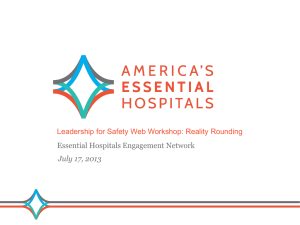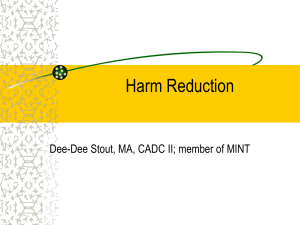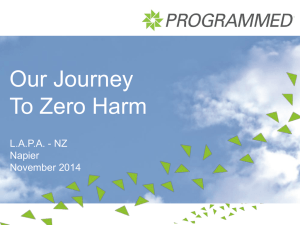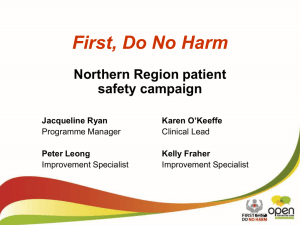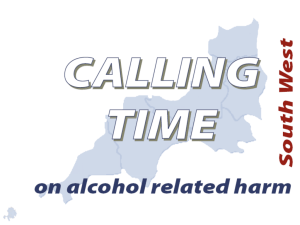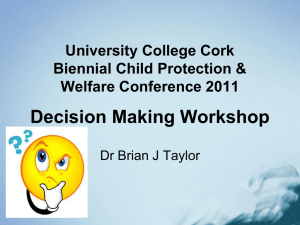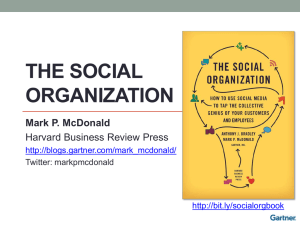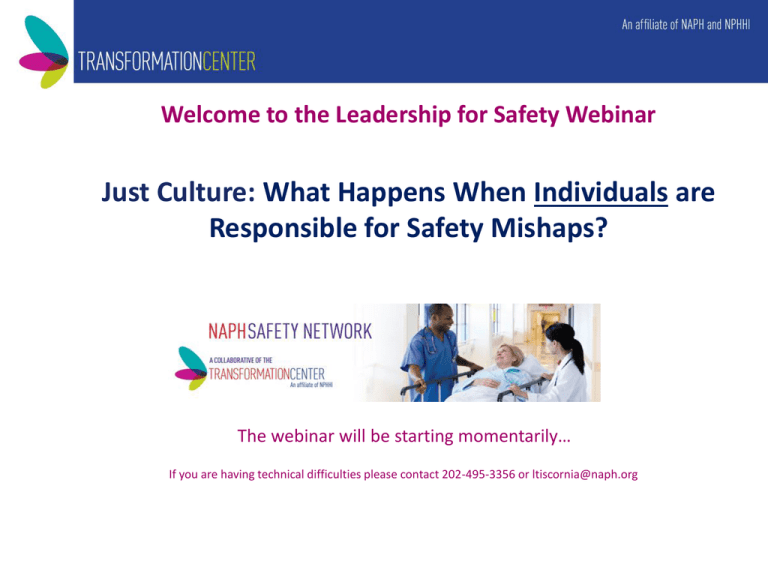
Welcome to the Leadership for Safety Webinar
Just Culture: What Happens When Individuals are
Responsible for Safety Mishaps?
The webinar will be starting momentarily…
If you are having technical difficulties please contact 202-495-3356 or ltiscornia@naph.org
Chat Box
Please use the Chat Box on the
webinar screen to type your
question or comment at any time.
NOW: Use the Chat Box to sign in.
Enter your organization and
names of all people in the room.
Agenda for Today’s Webinar
•
Recent disciplinary actions against individual staff
members: Accounts from your peers
•
Methods for determining individual culpability: Examples
of Just Culture algorithms and HR protocols
•
Next month’s focus: Engaging doctors in safety initiatives
Who is on Today’s Call?
Kimberly Horton, DHA,
MSN, FNP, RN, FACHE
Jim Reinertsen, MD
Bart Hill, MD, MPA
St. Luke’s Treasure Valley
St. Luke’s Regional Medical Center
St. Luke’s Meridian Medical Center
Jill Steinbruegge, MD, PhD
Cook County Health & Hospitals System
John H. Stroger, Jr. Hospital
Provident Hospital
Kerin Bashaw, MPH
San Francisco General Hospital and Trauma Center
Contra Costa Regional Med. Center
Alameda County Medical Center
Santa Clara Valley Health and Hospital System
Truman Medical Centers
TMC- Hospital Hill
TMC- Lakewood
San Mateo Medical Center
MetroHealth
Bianca Perez, PhD
Regional Medical Center at Memphis
Los Angeles County Department
of Health Services
Harbor-UCLA Med Center
LAC+USC Healthcare Network
Rancho Los Amigos National
Rehab. Center
Kimberly Horton, DHA,
MSN, FNP, RN, FACHE
Maricopa Medical Center
UT-Health Science Center at Tyler
Univ. Medical Center of El Paso
Harris County Health System
Ben Taub General
LBJ Hospital
Quentin Mease
LSU-HCSD
Interim
Bogalusa
Arielle Gorstein
Leadership Summit staff
Joan Spicer, RN, PhD, CCM
Javier Gonzalez,
MBA/HCM,BSN,CCM,CPHQ
Guest speakers on today’s call
A Fair and Just Culture:
Why Is it Important?
In-Patient Care Unit
Number of Responses
Nonpunitive response to error
Staff feel like their mistakes are held against them.
(A8R)
When an event is reported, it feels like the person
is being written up, not the problem. (A12R)
Staff worry that mistakes they make are kept in
their personnel file. (A16R)
M/S M/S
1
2 ICU
24 65 31
37% 46% 61%
43% 43% 58%
46% 46% 74%
22% 49% 52%
•Yes
Slide 6
© 2006. Healthcare Performance Improvement, LLC. ALL RIGHTS RESERVED
University Medical Center of El Paso
Slide 8
Alameda Health System
A Fair and Just Culture
A Fair and Just Culture supports a learning culture that focuses on proactive
management of system design and management of behavioral choices.
The Three Behaviors
Human Error
Product of our current
system design and
behavioral choices
At-Risk Behavior
Reckless Behavior
A choice: risk believed
insignificant or justified
Conscious disregard of
substantial and unjustified risk
Console
Coach
Discipline
Bi-Directional Accountability
ACMC Leadership
ACMC Staff
Systems design/maintenance
Cultivate honest, fair feedback
Consistent execution of just culture
Behavioral choices informed by ACMC
Policies
Engage in honest, fair feedback
TRUST – HUMANISTIC CARE
A Fair and Just Culture
Duty to Avoid Causing Unjustifiable Risk or Harm
Was it the
employee’s
purpose to cause
harm?
No
Did the employee
knowingly cause
harm?
Yes
Yes
Consider
punitive
action
Was the harm
justified as the
lesser of two
evils?
Yes
No
Did the behavior
represent a
substantial and
unjustifiable risk?
No
Do not consider
employee
action
Yes
No
Consider
punitive
action
Did the
employee
consciously
disregard this
substantial and
justifiable risk?
Yes
Support
employee in
decision
Actions
No
Should the employee
have known they were
taking a substantial and
unjustifiable risk?
Console
employee
and conduct
human error
investigation
Did the
employee
choose the
behavior?
Consider
Punitive
action
Yes
HE
RB
At all times, an employee will be subject to the duty to avoid causing unjustifiable risk
or harm to himself, to fellow employees, customers, visitors, and to the organization.
Under this duty, an employee will be subject to disciplinary action when they have
acted with reckless disregard toward the potential harm to themselves or others.
No
Do not
consider
employee
action
Coach Employee
and conduct atrisk behavior
investigation
ARB
Next Month:
Tuesday March 12th 8am PT/9am MT/10am CT/ 11am ET
Engaging Doctors in Safety Initiatives
1. Ask your staff: Who is the most engaged physician in your
collaborative?
2. Talk to him or her and be prepared to tell the rest of the group
A.
B.
C.
How s/he became engaged
What continues to drive engagement
What s/he thinks would work to engage other physicians
SAVE THE DATES!
Monthly webinars extended to September 2013
June 19, 2013
Leadership for Safety: Yes, It’s Personal
A Workshop for Boards, C-Suite, and Senior Leaders
THANK YOU FOR JOINING US
Feedback survey can be accessed in chat box.

